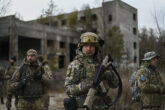December 16, 2020
Small, Distributed, and Secure: A New Basing Architecture for the Middle East
The recent assassination of Iranian physicist Mohsen Fakhrizadeh may not have been an American-led operation, but it nonetheless raised the risk of reprisal attacks, quite possibly targeting U.S. bases. The vulnerability of American military bases in the Middle East to missile attack is not new, but growing Iranian capabilities make U.S. assets deployed in the region more vulnerable. In recognition of this threat, a rethink of U.S. basing architecture is needed.
A rethink of U.S. basing architecture is needed.
The administrations of both Barack Obama and Donald Trump sought to scale back commitments in the Middle East in order to focus on countering Russia and China. But these plans were repeatedly thwarted by challenges in the region, as well as nervous local partners, and complications created by Washington’s “maximum pressure” campaign against Iran. President-elect Joe Biden has also argued for a reduced U.S. presence in the Middle East. It is this impulse to disengage from the region, combined with the risks to U.S. bases there, that makes a rethink so essential.
Read the full article in War on the Rocks.
More from CNAS
-
The Venezuela Blockade
Roxanna Vigil, Council on Foreign Relations International Affairs Fellow, talks about President Donald Trump's order to blockade sanctioned oil tankers in Venezuela, and the r...
By Becca Wasser
-
The Astronomical Cost of Defeating ‘Any Foreign Aerial Attack’
Building Trump’s proposed missile and air defense system would be an enormous task — and the president’s spending target is likely just a fraction of the final price. CNAS adj...
By Becca Wasser
-
Defense / Transatlantic Security
When Defense Becomes Destruction: Austria-Hungary’s Mistake and Ukraine’s RiskThis article was originally posted on War on the Rocks. The southeastern Polish city of Przemyśl, with its elegant 19th century Habsburg-era train station, remains one of the ...
By Franz-Stefan Gady
-
Defense / Transatlantic Security
Ukraine’s Catch-22 MomentThis article was originally published in the Financial Times. In Joseph Heller’s wartime classic, Catch-22, the protagonist Yossarian seeks out the US army surgeon Doc Daneeka...
By Franz-Stefan Gady




